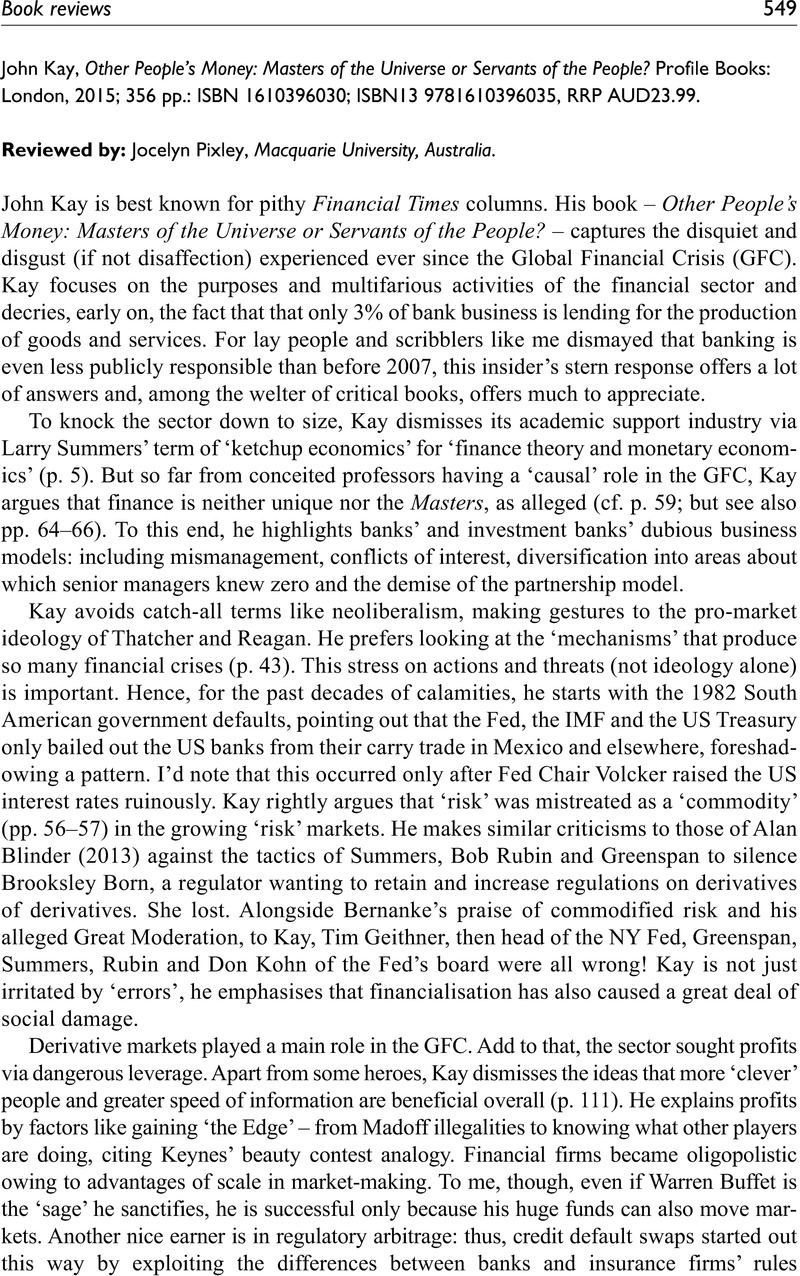No CrossRef data available.
Article contents
John Kay, Other People’s Money: Masters of the Universe or Servants of the People?Profile Books: London, 2015; 356 pp.: ISBN 1610396030; ISBN13 9781610396035, RRP AUD23.99.
Review products
John Kay, Other People’s Money: Masters of the Universe or Servants of the People? Profile Books: London, 2015; 356 pp.: ISBN 1610396030; ISBN13 9781610396035, RRP AUD23.99.
Published online by Cambridge University Press: 01 January 2023
Abstract
An abstract is not available for this content so a preview has been provided. Please use the Get access link above for information on how to access this content.

- Type
- Book reviews
- Information
- The Economic and Labour Relations Review , Volume 29 , Issue 4: Symposia: Global Financial Crisis 10 Years On; Full Employment White Paper , December 2018 , pp. 549 - 554
- Copyright
- © The Author(s) 2018
References
Blinder, A (2013) After the Music Stopped: the Financial Crisis, the Response, and the Work Ahead. New York: Penguin Books.Google Scholar
Coombs, HC (1971) Other People’s Money: Economic Essays. Canberra, ACT, Australia: Australian National University.Google Scholar
Ferguson, A (2018) Disgust palpable as bank takes Hayne Hit. The Sydney Morning Herald, 25–26 August, p. 12.Google Scholar
Kent, C (2018) ‘Money – born of credit?’ Speech of RBA assistant governor, Sydney. 19 September. Available at: rba.gov.au/speeches/2018 (accessed 11 October 2018).Google Scholar
McLeay, M, Radia, A, Thomas, R (2014) Money creation in the modern economy. Bank of England Quarterly Bulletin Q1: 4–27.Google Scholar
Martin, P (2018) How the Coalition fed the sharks. The Sydney Morning Herald, 26 April, p. 22.Google Scholar
Pixley, JF (2018) Central Banks, Democratic States and Financial Power. Cambridge University Press.CrossRefGoogle Scholar
Ricks, M (2016) The Money Problem: Rethinking Financial Regulation. Chicago, IL: Chicago University Press.CrossRefGoogle Scholar


